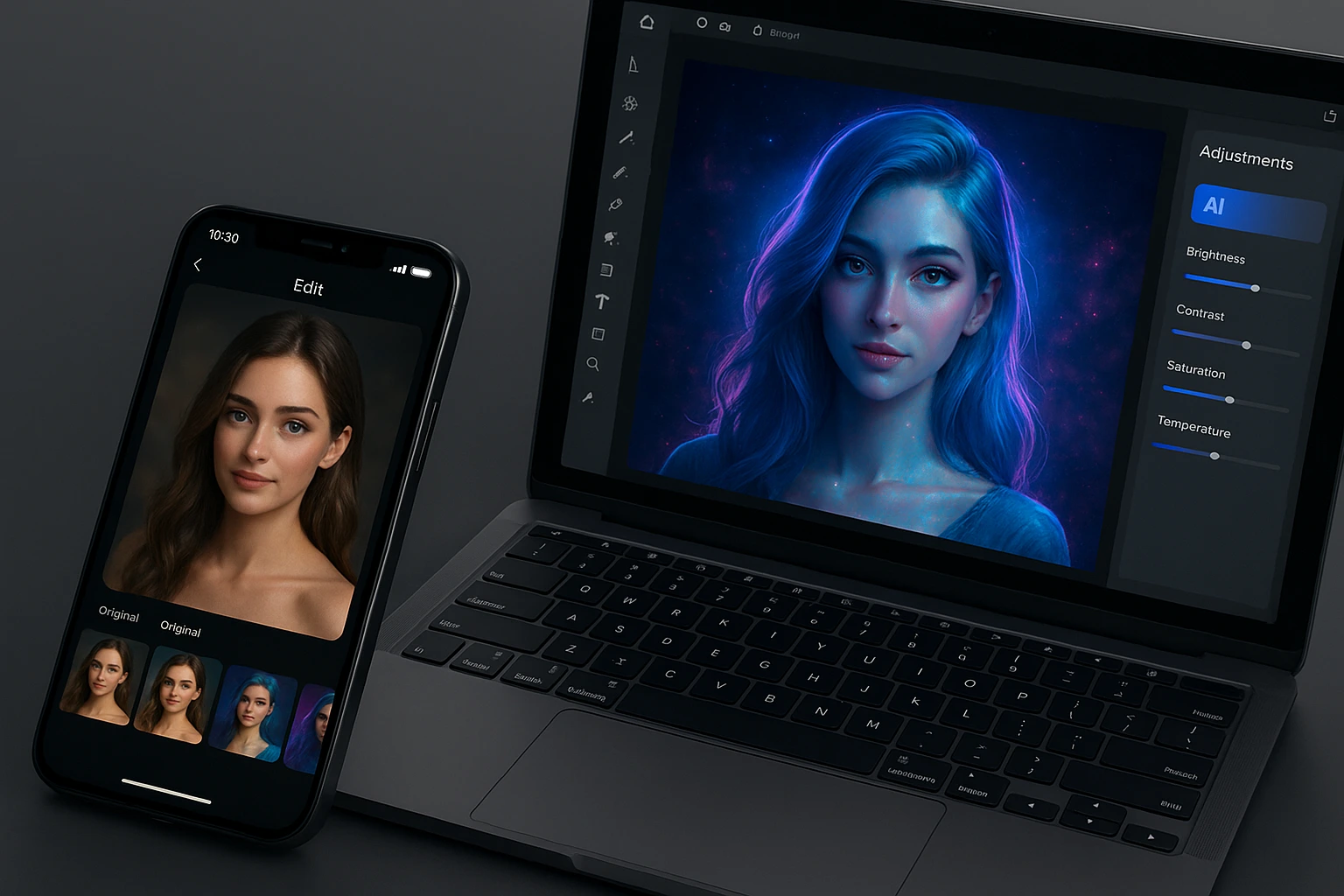In 2025, artificial intelligence has become a defining force in the creative industry, reshaping how images are produced, edited, and shared. What used to require hours of manual editing can now be achieved in seconds through AI-powered photo editing apps. From quick retouching to generative art, tools like Lensa AI and Photoshop AI are at the forefront of this revolution, offering both professionals and casual users the ability to create high-quality visuals faster than ever before.
AI photo editing is not entirely new, but the level of sophistication has grown exponentially in the last two years. Early AI tools focused on simple background removal or automated filters. Today, apps like Lensa and Photoshop AI use advanced machine learning and generative models to not only enhance photos but also create entirely new content from scratch. According to The Verge, this technology is blurring the line between photography and digital art, enabling everyone to act as both photographer and artist.
Lensa AI became a viral phenomenon in late 2023 with its “Magic Avatars,” which turned selfies into stylized portraits. By 2025, Lensa has evolved far beyond avatars. It now offers advanced retouching features, background generation, and context-aware editing that can change lighting, replace skies, or even remove entire objects seamlessly. The app leverages Stable Diffusion models, giving users the power of generative AI without needing technical expertise. This democratization of creativity has made Lensa one of the most downloaded AI editing apps worldwide.
Photoshop AI, on the other hand, represents how traditional software giants are adapting to the AI era. Adobe integrated its Firefly generative AI engine directly into Photoshop, giving users tools such as Generative Fill, which allows them to add, remove, or expand elements in a photo with a single prompt. As Adobe’s official blog highlights, this technology doesn’t just speed up workflows – it transforms them. Designers and photographers no longer spend hours cloning pixels or cutting objects; they simply describe what they want, and the AI executes it in seconds.
Beyond Lensa and Photoshop, the ecosystem of AI photo apps continues to expand. Tools like Fotor, Luminar Neo, and Canva AI provide both casual and professional features, from instant background replacement to AI-driven design templates. Meanwhile, emerging platforms like Runway push the boundaries further, introducing text-to-image and video editing capabilities, where a user can literally describe a scene and watch it materialize.
The impact of these tools goes beyond convenience. They are fundamentally changing the expectations of visual content. For social media users, AI-powered editing means a new level of personalization and aesthetic control. For businesses, it reduces costs and turnaround times, allowing marketing teams to generate professional visuals without relying exclusively on external agencies. As TechCrunch reports, even small startups now have access to design capabilities that rival those of large corporations, thanks to AI-driven platforms.
However, the rise of AI photo editing also raises significant questions. One of the most debated topics is authenticity. When AI can alter or generate images so convincingly, it becomes harder to distinguish between real and artificial visuals. This has implications not only for creative industries but also for journalism, advertising, and even legal contexts where visual evidence must remain reliable. Adobe and other companies are addressing this challenge through initiatives like Content Credentials, which embed metadata to show when and how an image was AI-edited.
Another concern is related to copyright and ethics. Many AI models are trained on massive datasets that include copyrighted works, raising questions about ownership and fair use. Companies like Adobe emphasize that their Firefly model is trained only on licensed and copyright-free material, while others face criticism for lacking transparency. The debate is ongoing, and it is shaping how governments and organizations regulate AI-generated content.
Looking into the future, AI photo editing apps are expected to become even more interactive and multimodal. Instead of just editing photos, they may allow users to create dynamic scenes that integrate with AR and VR environments. Imagine generating a product photo that can instantly be transformed into a 3D model for e-commerce, or editing a portrait that automatically adapts for both social media and video platforms. With the development of 6G and advanced computing, these workflows could become instantaneous.
In conclusion, AI photo editing apps like Lensa AI and Photoshop AI are no longer niche tools – they are mainstream technologies transforming the way we create and consume visual content. They offer speed, creativity, and accessibility, but also challenge us to rethink authenticity and ownership in the digital age. Whether for casual users wanting to enhance selfies or for professionals aiming to streamline design projects, AI-powered editing is redefining creativity in 2025 and beyond.
👉 For more deep dives into digital creativity and AI tools, visit our Technology section.
👉 To see app reviews and comparisons, check out Reviews.
